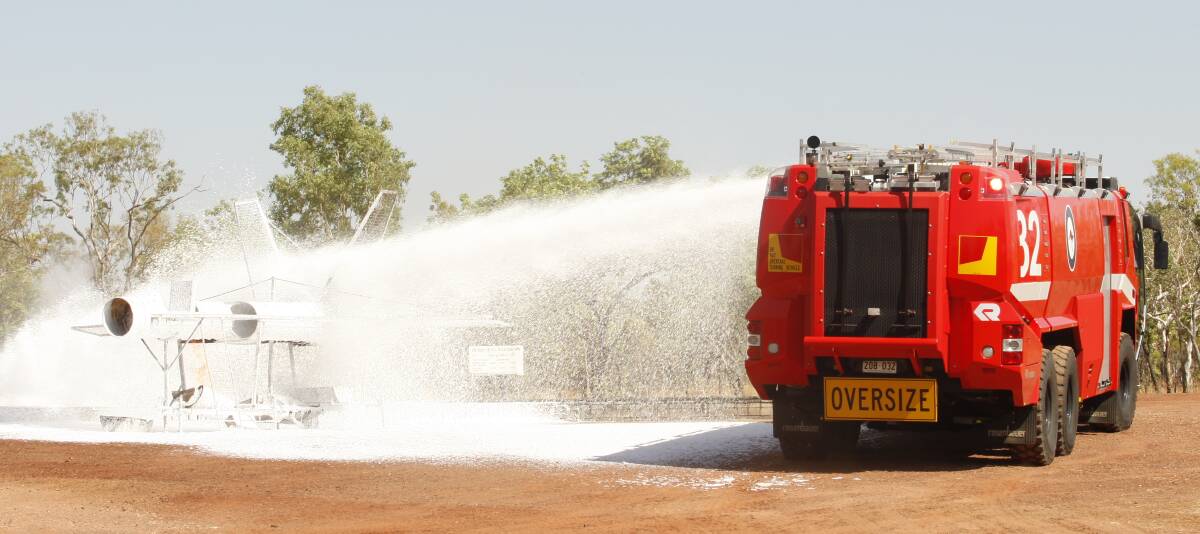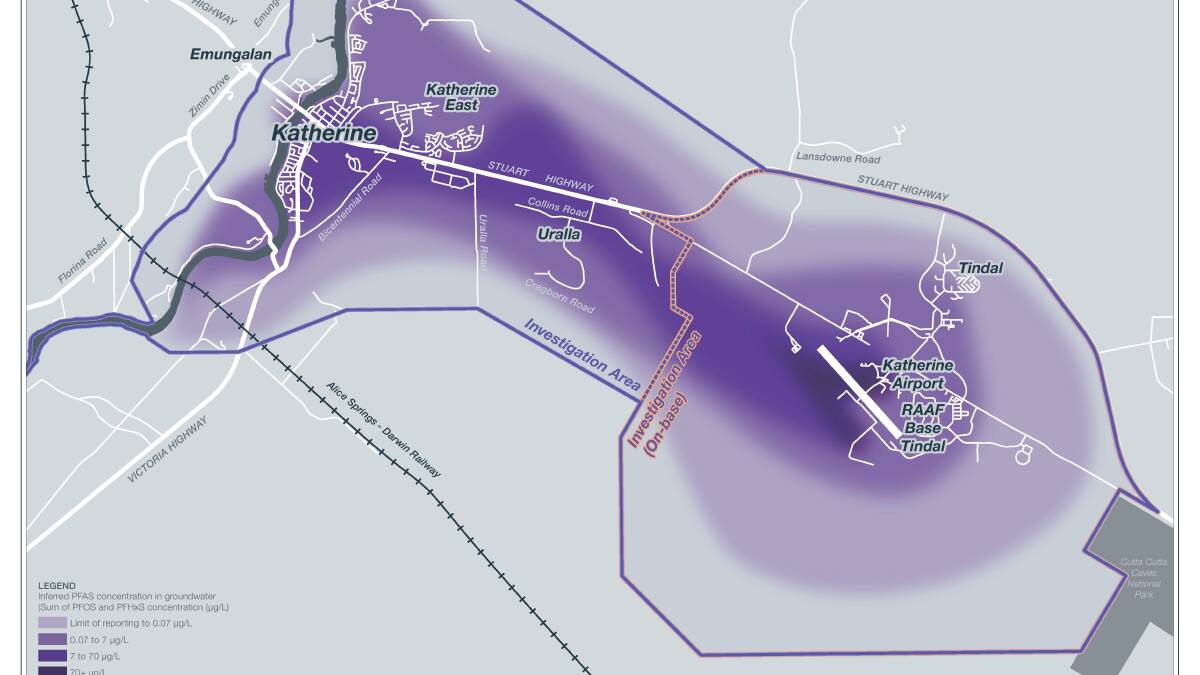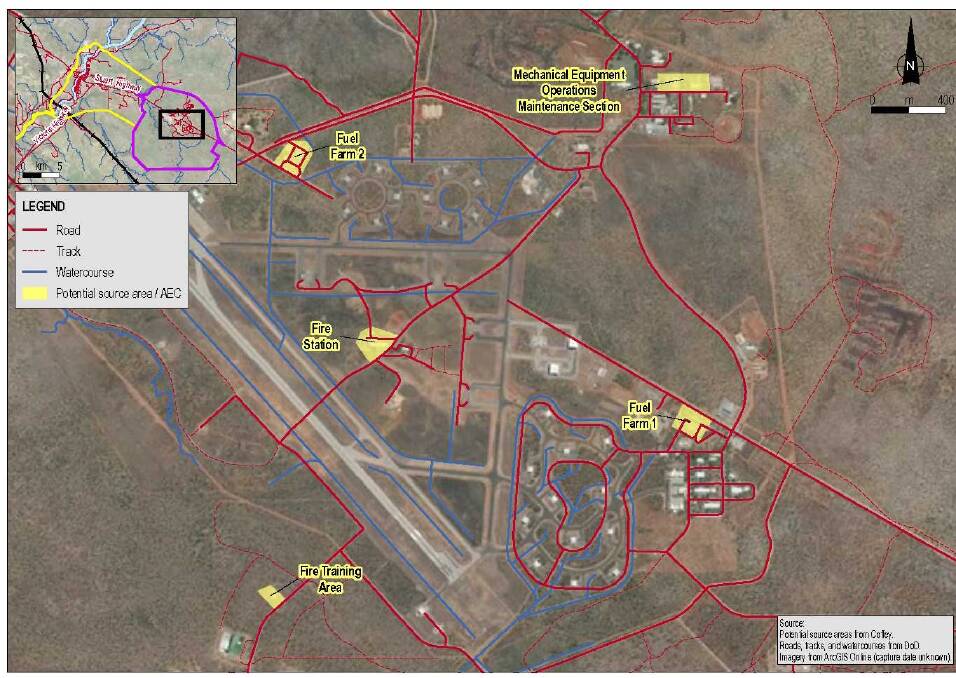
Experts estimate there is more than four tonnes of PFAS sludge contaminating the groundwater and soils in the Katherine region.
Subscribe now for unlimited access.
$0/
(min cost $0)
or signup to continue reading
The information was contained in a little heralded supplementary investigation report released on September 24.
Consultants to the Department of Defence confirmed in this updated report the majority of PFAS is transported off the Tindal RAAF Base by PFAS impacted groundwater.
“A small percentage of this is directly from surface water run-off from drains on RAAF Base Tindal,” the report says.
The PFAS contamination through the Katherine investigation area was estimated to be more than 3000 kilograms, the consultants said.
“A further 1000kg of PFAS is potentially accessible for removal from the key source areas on RAAF Base Tindal.
“Removing this residual mass will significantly reduce the ongoing leaching from the base and shorten the time for PFAS to flush from the environment.

“The removal of PFAS from the source areas is unlikely to have a short-term impact on the concentrations of PFAS in groundwater and the Katherine River.”
The report also suggests 100kg of PFAS may be leaching from the base each year.
“The estimate of dispersed mass in the system (3500 kg) is also similar to the mass that would be estimated based on 30 years since the start of source release at a flux of 100 kg/year leaving the Base.
“All mass estimates and mass flux estimates are based on assumptions and simplifications and should be viewed as approximate values to provide order of magnitude estimates and indications of relative contributions across the system.”
The report also says the PFAS “does not readily degrade in the environment and are known to be highly persistent, remaining for many years”.
PFAS was used in fire fighting foams in training at Tindal for 16 years from 1988.
“The potential health and ecological effects of these substances are not well defined, however given their environmental persistence, Environmental Health Standing Committee (enHealth) have issued a precautionary warning to limit exposure to humans from these compounds,” the report says.
More reading: Katherine’s PFAS timeline.
As well as this supplementary report, a further ecological risk assessment is due to be released next month.
That report is to “assess the potential for PFAS exposure in plants and animals” and help guide “the remediation and risk management measures needed to address PFAS contamination”.
This supplementary report says Defence is already taking steps to clean up Tindal.
“Defence has commenced planning to engage specialists to remove contaminated soil from identified source areas and undertake activities to remove PFAS from water before it leaves the base through the employment of two water treatment plants.
The report said sampling of soil, surface water, groundwater or sediments confirmed Tindal was the primary PFAS source area.

Specifically, the sampling found the PFAS hot spots were the fire station and the drainage area to the west, the fire training area.
Minor PFAS source areas found on Tindal were the Fuel Farm 1 and 2 plus the Mechanical Equipment Operations Maintenance Section.
“Defence are currently installing two water treatment plants to remove PFAS from the groundwater in the Tindall Aquifer. The treatment plants are located on Base as they will work more efficiently to treat the contaminated groundwater near source sites, such as the Fire Station and Fire Training Area,” the report said.
“The treatment plants will extract contaminated water from the aquifer, treat it to remove PFAS and then re-inject it into the aquifer.”
Defence spokesmen have said this gradual clean-up of the aquifer would take an unknown number of years.


